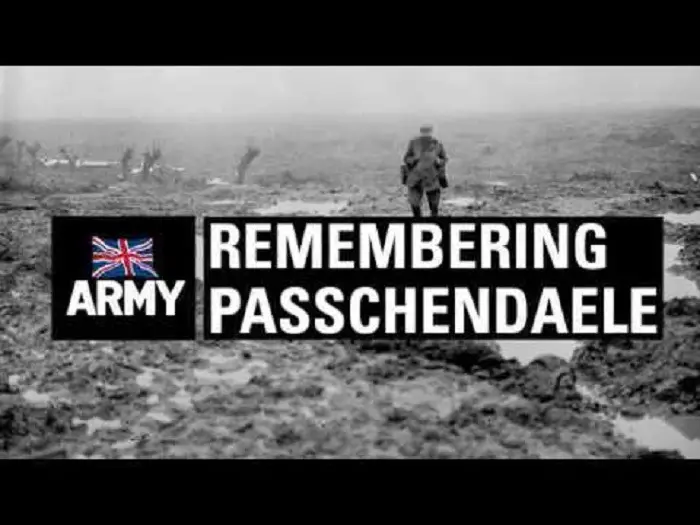Senior Lecturer at the Royal Military Academy Sandhurst, Dr Stuart Mitchell provides an insight to one of the most important and tragic events of the First World War, the Battle of Passchendaele.
The Battle of Passchendaele (German: Flandernschlacht, French: Deuxième Bataille des Flandres), also known as the Third Battle of Ypres, was a campaign of the First World War, fought by the Allies against the German Empire. The battle took place on the Western Front, from July to November 1917, for control of the ridges south and east of the Belgian city of Ypres in West Flanders, as part of a strategy decided by the Allies at conferences in November 1916 and May 1917. Passchendaele lay on the last ridge east of Ypres, 5 mi (8.0 km) from a railway junction at Roulers, which was vital to the supply system of the German 4th Army. The next stage of the Allied plan was an advance to Thourout–Couckelaere, to close the German-controlled railway running through Roulers and Thourout.
Further operations and a British supporting attack along the Belgian coast from Nieuwpoort, combined with Operation Hush (an amphibious landing), were to have reached Bruges and then the Dutch frontier. The resistance of the 4th Army, unusually wet weather, the onset of winter and the diversion of British and French resources to Italy, following the Austro-German victory at the Battle of Caporetto (24 October – 19 November), enabled the Germans to avoid a general withdrawal, which had seemed inevitable in early October. The campaign ended in November, when the Canadian Corps captured Passchendaele, apart from local attacks in December and in early 1918. The Battle of the Lys and the Fifth Battle of Ypres were fought before the Allies occupied the Belgian coast and reached the Dutch frontier.
A campaign in Flanders was controversial in 1917 and has remained so. The British Prime Minister, David Lloyd George, opposed the offensive, as did General Ferdinand Foch the French Chief of the General Staff. Field Marshal Sir Douglas Haig, commanding the British Expeditionary Force (BEF), did not receive approval for the Flanders operation from the War Cabinet until 25 July. Matters of dispute by the participants, writers and historians since the war, have included the wisdom of pursuing an offensive strategy in the wake of the Nivelle Offensive, rather than waiting for the arrival of the American Expeditionary Force (AEF) in France.
The choice of Flanders over areas further south or the Italian front, the climate and weather in Flanders, the choice of General Hubert Gough and the Fifth Army to conduct the offensive, debates over the nature of the opening attack and between advocates of shallow and deeper objectives, have also been controversial. The passage of time between the Battle of Messines (7–14 June) and the Battle of Pilckem Ridge (31 July) the opening move of the Third Battle of Ypres), the extent to which the internal troubles of the French armies motivated British persistence with the offensive, the effect of the weather, the decision to continue the offensive in October and the human cost of the campaign on the soldiers of the German and British armies, have also been argued over ever since.















